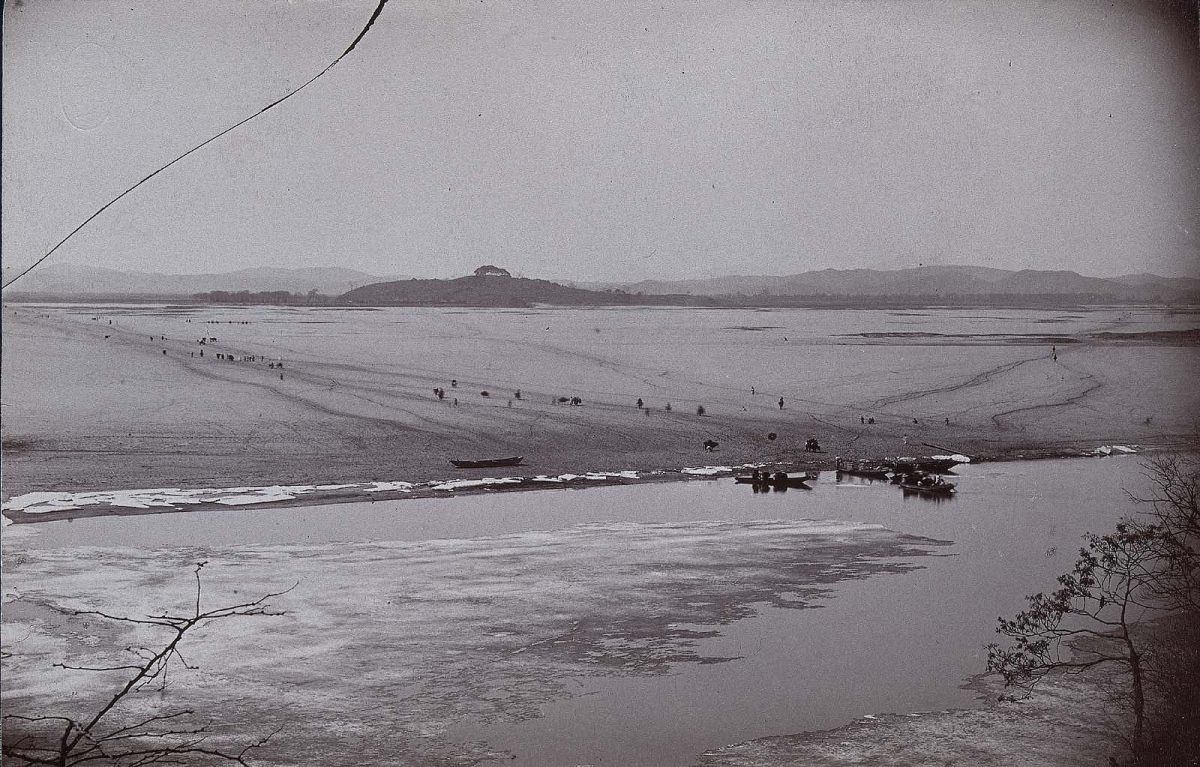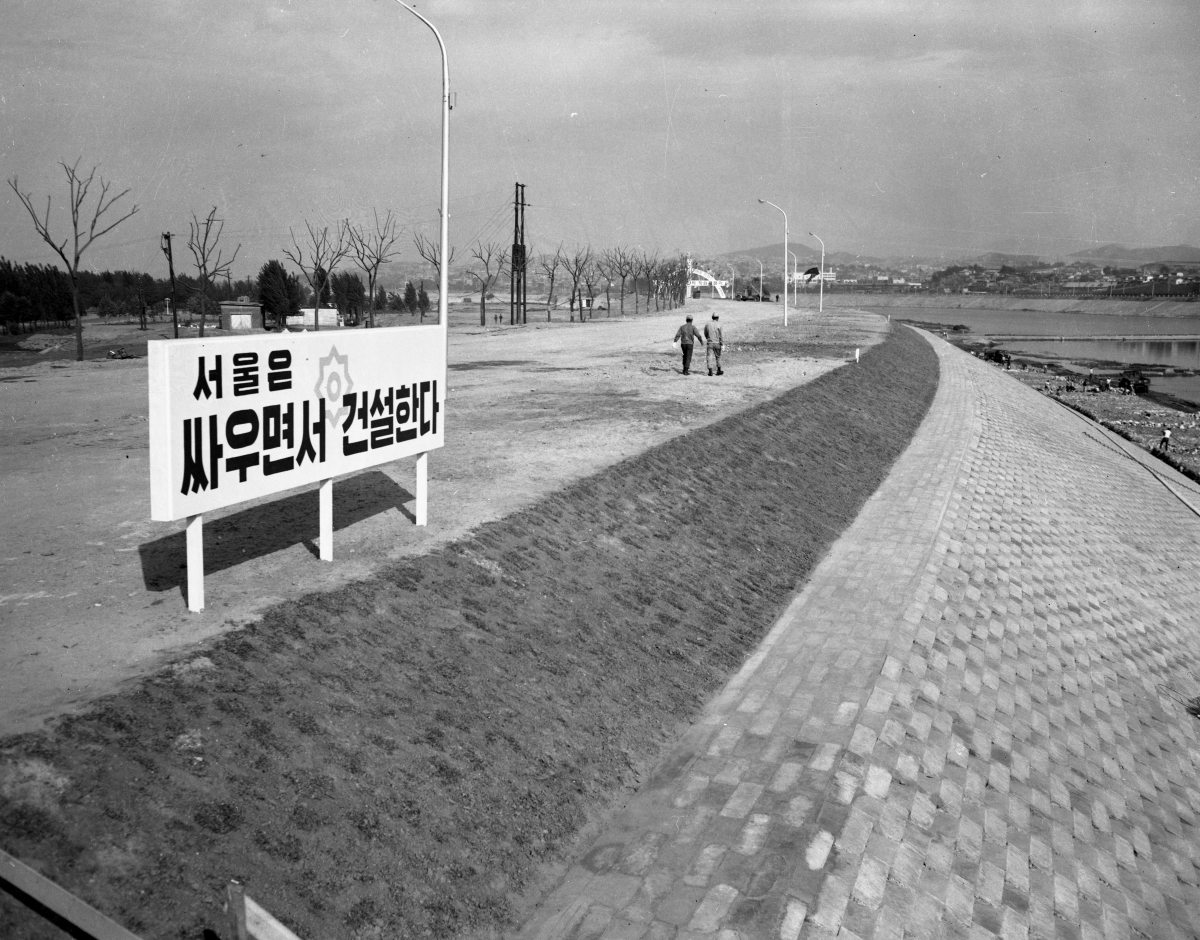
View of Yeouido from Mapo in 1884 / Image courtesy of Seoul Museum of History

Construction view of Yeouido circle levee in 1968 / Image courtesy of Seoul Museum of History
Yeouido, an island located in Yeongdeungpo-gu, Seoul, has played a different role in each era: a mulberry plantation and grassland during the Joseon Dynasty, an airfield during the Japanese colonial period, a political and financial hub since the 1960s. The exhibition, ‘Yeouido, a Sand Island, an Airfield, and a Concrete Jungle’, introduces this long history of transition in Yeouido, and has been on show at the Seoul Museum of History since May 21.
Unfolding in chronological order from the 1880s to the 2010s, this exhibition consists of a total of five sections, and it examines the traces and meanings of Yeouido in each era through the documented photographs, drawings, and videos. In the first part, the audience can see the historical data of Yeouido during the Joseon Dynasty when it was called ‘Inghwado’ and ‘Nauiju’. Here, an 1884 photograph of Yeouido taken by Percival Lowell, which is the oldest known photograph of Yeouido, is also on display. The second part continues by unveiling the process behind the creation of an airfield and air route in Yeouido, the story of pilot Ahn Changnam and marathoner Son Keechung, and the planning of the airport. The third part introduces the major events that served as thresholds of the modernisation, the construction of the circle levee and Seouldaegyo Bridge (currently renamed as Mapodaegyo Bridge) that were simultaneously initiated with the appointment of the mayor Kim Hyunok and the urban planning initiatives in Yeouido.
The fourth part unveils the construction process behind the buildings that now stand as the landmarks in Yeouido, including the National Assembly, Korea Exchange, and 63 Building. It also shows the construction process behind apartment blocks, from a pilot apartment to Samik, Eunha, to the Hanyang Apartments. The last part illuminates another aspect of Yeouido, as open public space. Its 5.16 Square was used as a place to hold the 1971 Armed Forces Day event, the 1983 KBS broadcasting of Finding Dispersed Families, and the 1987 presidential election campaign, then it was finally transformed into Yeouido Park in 1999. This exhibition of the approximately 100-year-long history of Yeouido will be on show until Sep. 26.




